Idea by
Onur Kırdök, Ayça Tokuç
Call for ideas 2019
Algaponics
Algaponics

- New alliances
The system is a self-sufficient modular building element –a balcony annex– that maintains a cycle of life and production, and helps to create more green and blue areas in the urban context. It targets the issues of urban resilience, climate change, expected water crisis and food security in one proposal.
Algaponics is a circular agricultural system for integrating nature-based solutions into buildings and cities to grow food in the urban context. This system consists of the integration of four elements; green roofs that filter water, photobioreactors that cultivate microalgae inside, fish tanks for fish production, and plant beds for vegetable production. They are all connected through a water cycle and provide the necessary conditions (such as nutrients and water) for the other elements to perform.
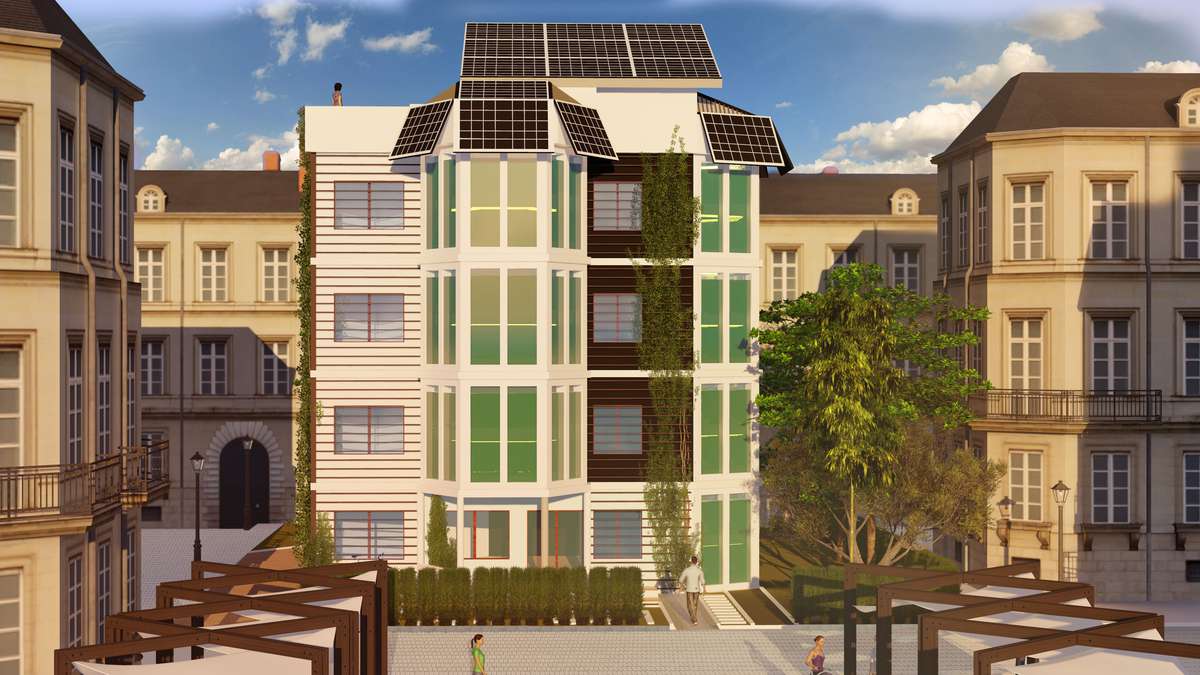
Social:
Planting and harvesting cycle has been the core of human interaction with nature for a long time. Algaponics would support healthy living for the inhabitants, increase public awareness, and encourage involvement and reconnection with nature. Knowledge sharing, dialogue and common interests of residents would improve social cohesion. If algaponics is applied to all new buildings as a program element, this would cause a massive impact for the community and the cities of the future.
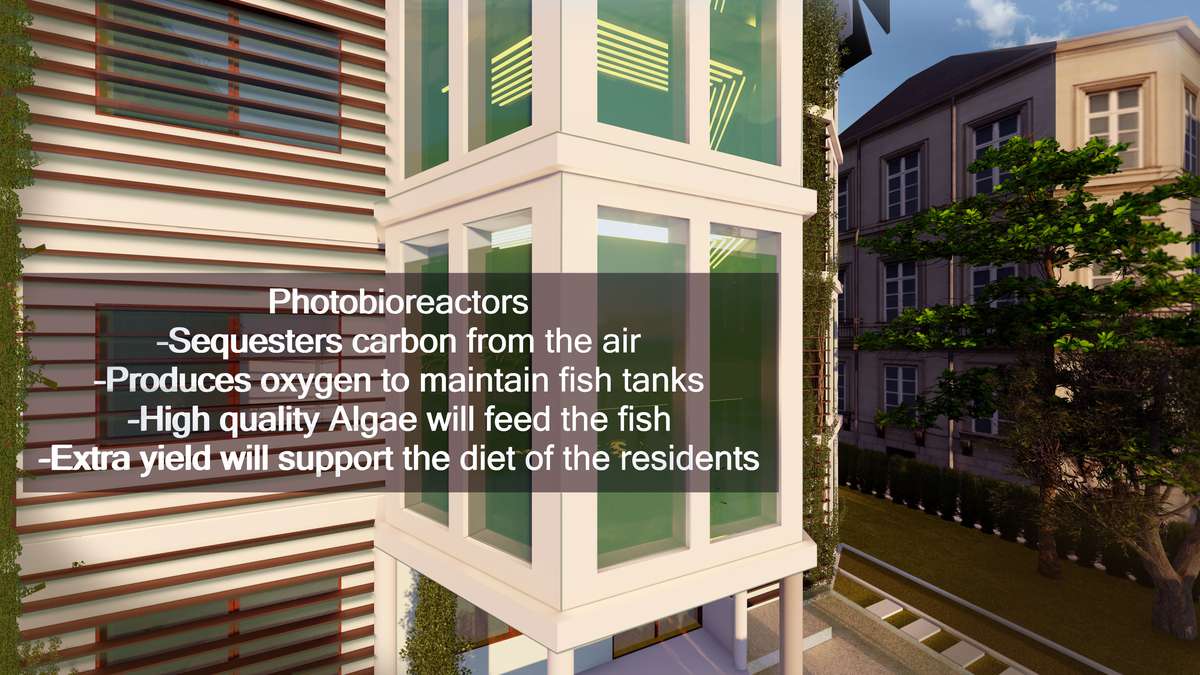
Public health and well‐being
The questions about; food safety, hazardous chemicals in our food, freshness etc. are gaining prominence for the health of the community. Fresh food grown in algaponic units will deal with all of these issues. This algaponic unit offers 8 m2 of planting area and nearly 1 m3 algae growth capacity for each storey. An additional benefit will be that working and interacting with algaponics will provide the urban residents with an opportunity to relax and relieve stress
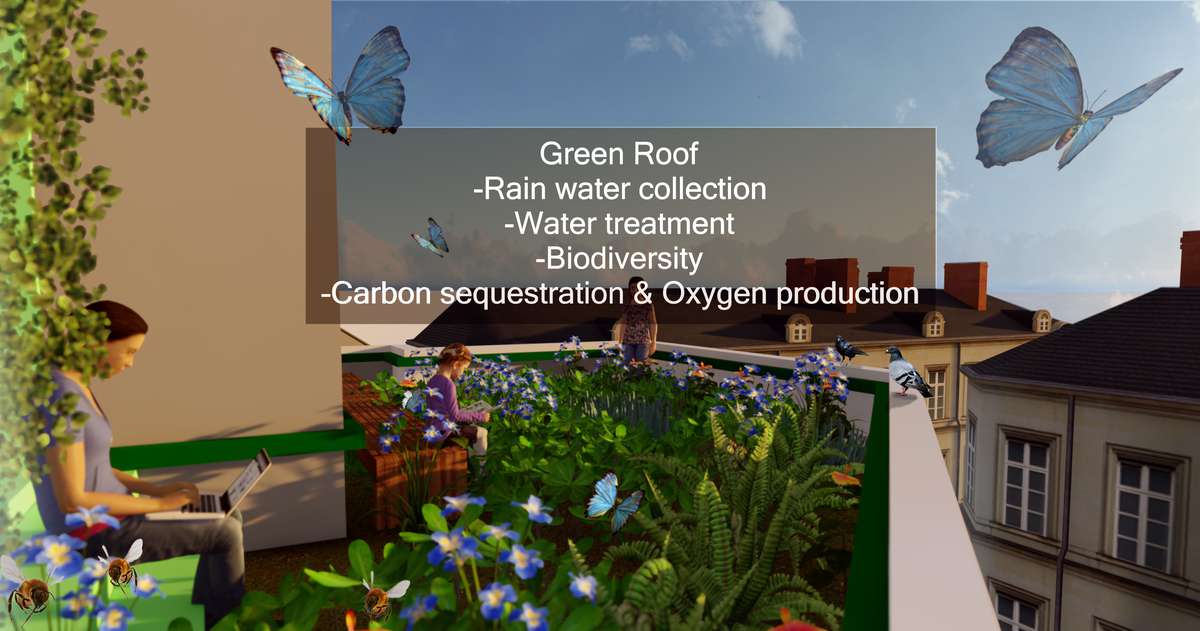
Environmental
Nearly all of the elements in the system sequester carbon and provide oxygen. The green roof would support the local ecosystems and infrastructure of the city. Green roof application on top of the building and additional plant growth on the balcony will improve the air quality at the micro scale. Common use of algaponics would increase climate resilience. In addition, increasing the multicultural property of the ecosystem will decrease the risk of dependency on certain species.
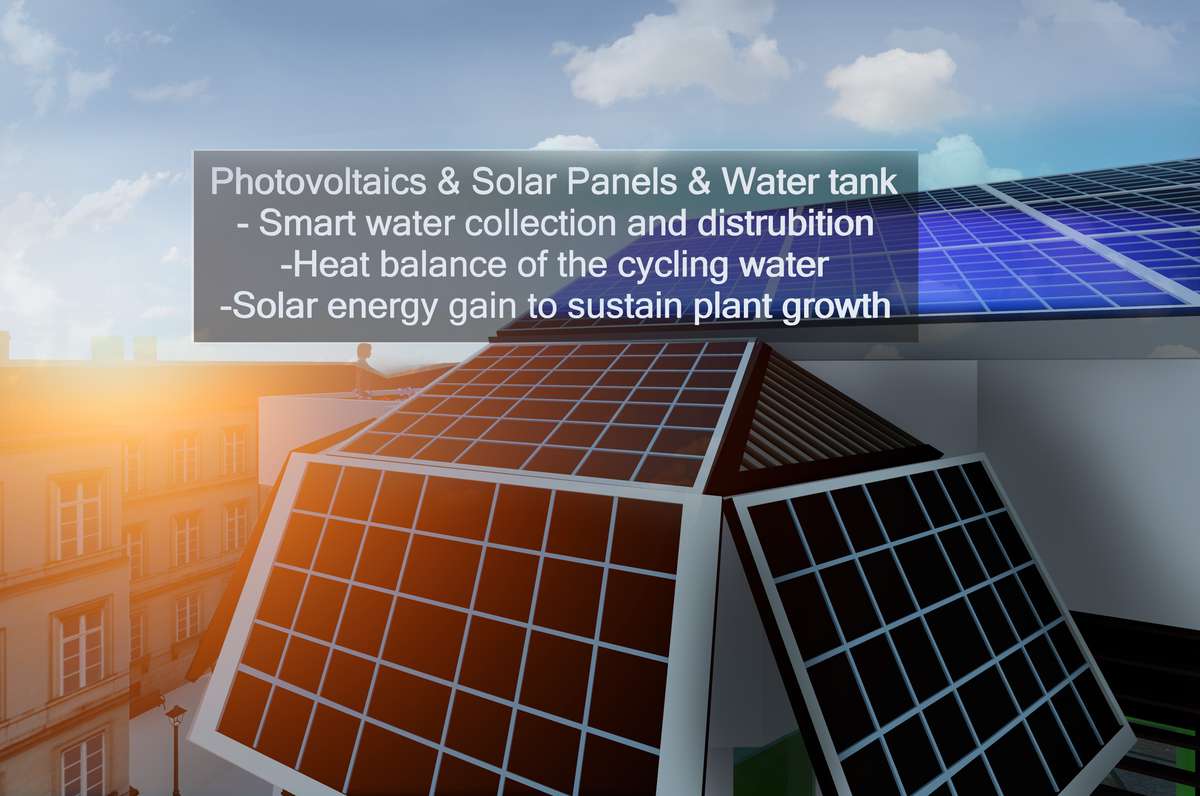
Energy
Use of solar power is one of life’s main supports. Main elements of these project also utilise solar energy, photosynthesis and products from other elements to keep themselves alive. Additional elements like pumps and lighting need auxiliary energy to ensure the continuity of the life cycle. Therefore PV panels located on the roof of the proposed system will supply power to these units. Solar tubes will help to maintain the heat inside the cycling water.
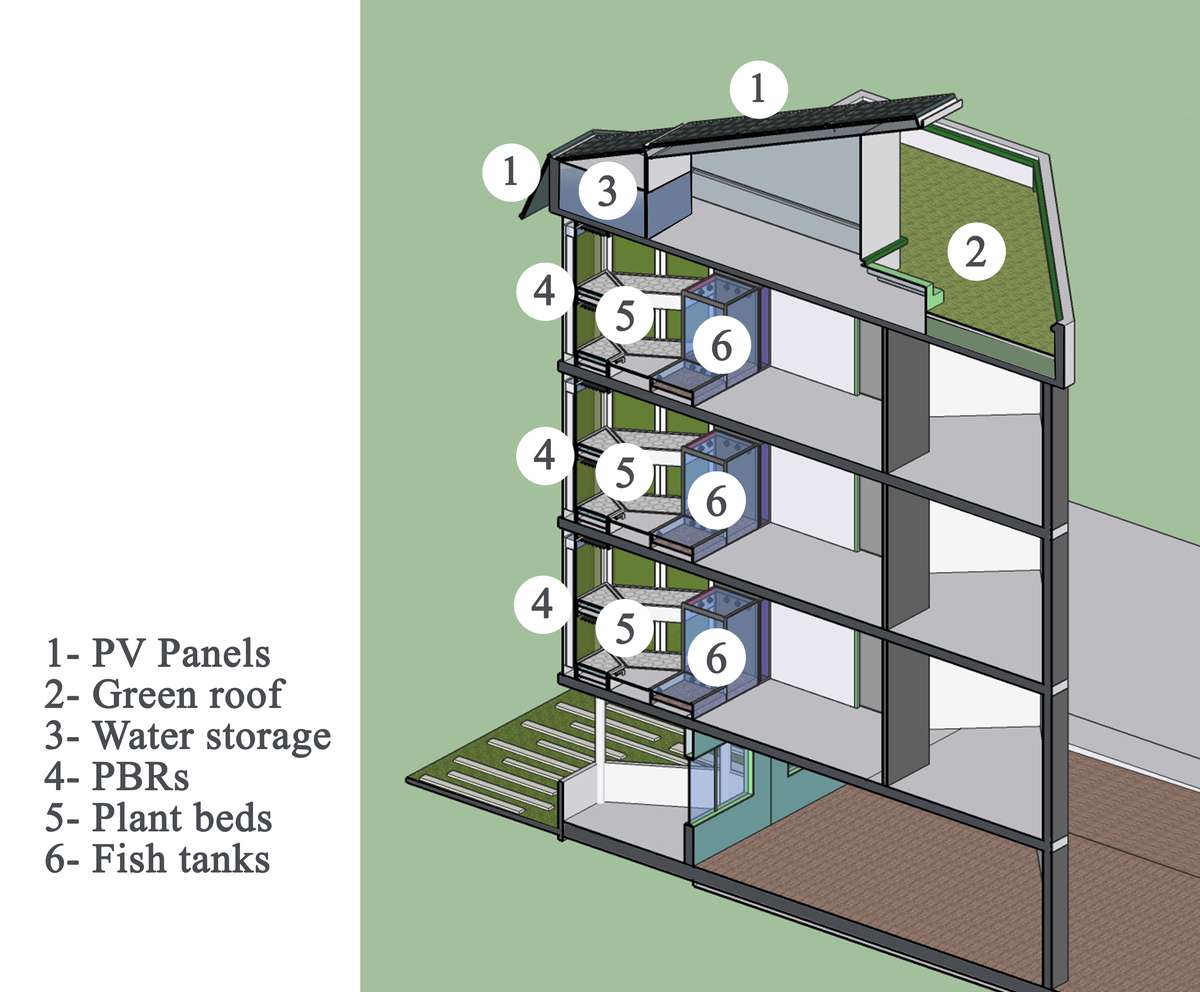
Economic
The whole system can have higher operational costs than current agricultural techniques. However, in terms of production capacity, this system will yield ten times more produce on a yearly basis since it can operate efficiently without many restrictions, such as day and night. Local farming chains, where everyone can contribute and barter with their own surplus produce will be another output of this project. Products can differ from one apartment to another.
Algaponics
Algaponics

- New alliances
The system is a self-sufficient modular building element –a balcony annex– that maintains a cycle of life and production, and helps to create more green and blue areas in the urban context. It targets the issues of urban resilience, climate change, expected water crisis and food security in one proposal.
Algaponics is a circular agricultural system for integrating nature-based solutions into buildings and cities to grow food in the urban context. This system consists of the integration of four elements; green roofs that filter water, photobioreactors that cultivate microalgae inside, fish tanks for fish production, and plant beds for vegetable production. They are all connected through a water cycle and provide the necessary conditions (such as nutrients and water) for the other elements to perform.
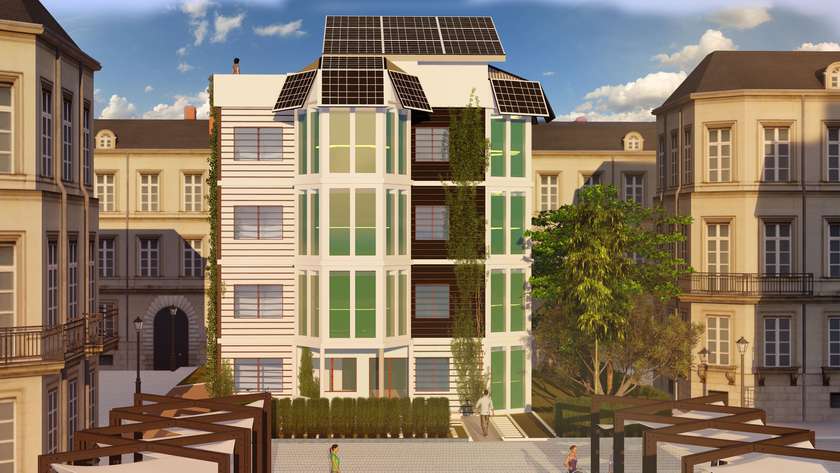
Social:
Planting and harvesting cycle has been the core of human interaction with nature for a long time. Algaponics would support healthy living for the inhabitants, increase public awareness, and encourage involvement and reconnection with nature. Knowledge sharing, dialogue and common interests of residents would improve social cohesion. If algaponics is applied to all new buildings as a program element, this would cause a massive impact for the community and the cities of the future.
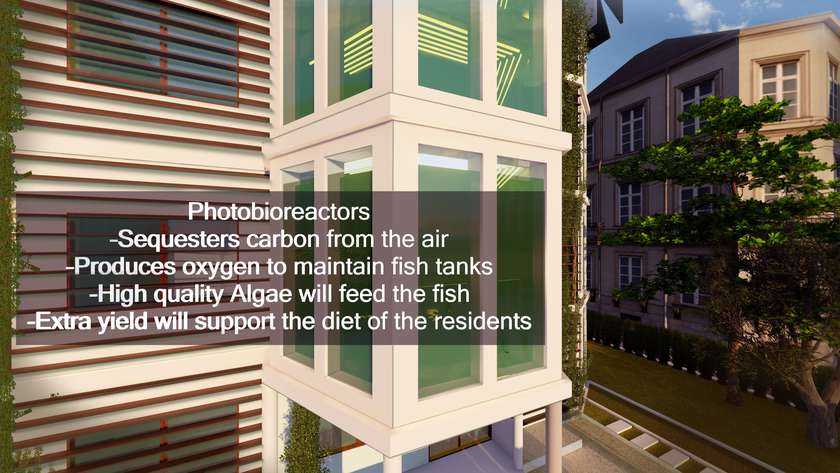
Public health and well‐being
The questions about; food safety, hazardous chemicals in our food, freshness etc. are gaining prominence for the health of the community. Fresh food grown in algaponic units will deal with all of these issues. This algaponic unit offers 8 m2 of planting area and nearly 1 m3 algae growth capacity for each storey. An additional benefit will be that working and interacting with algaponics will provide the urban residents with an opportunity to relax and relieve stress
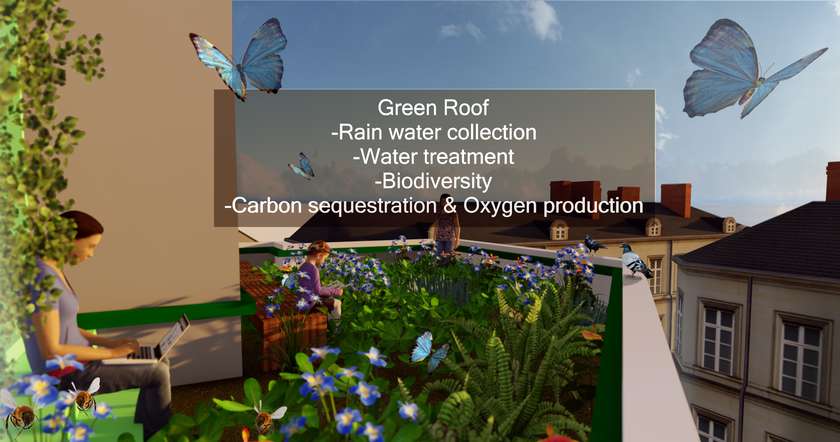
Environmental
Nearly all of the elements in the system sequester carbon and provide oxygen. The green roof would support the local ecosystems and infrastructure of the city. Green roof application on top of the building and additional plant growth on the balcony will improve the air quality at the micro scale. Common use of algaponics would increase climate resilience. In addition, increasing the multicultural property of the ecosystem will decrease the risk of dependency on certain species.
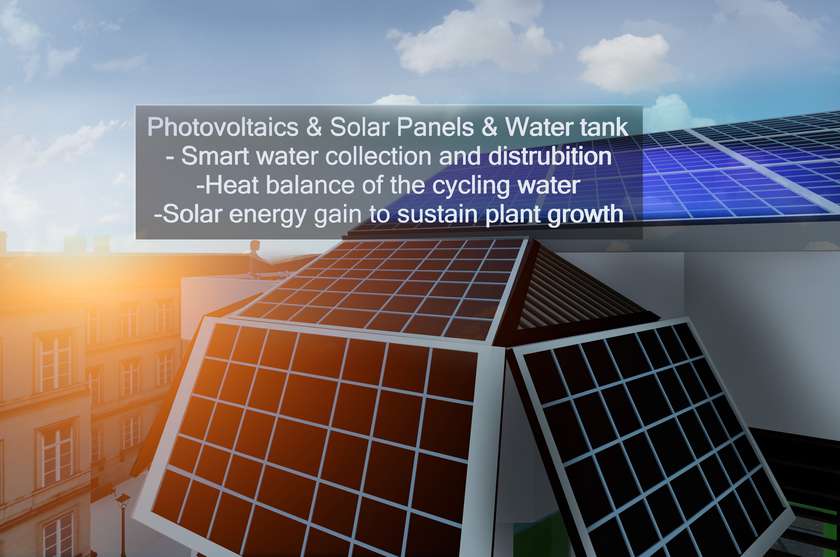
Energy
Use of solar power is one of life’s main supports. Main elements of these project also utilise solar energy, photosynthesis and products from other elements to keep themselves alive. Additional elements like pumps and lighting need auxiliary energy to ensure the continuity of the life cycle. Therefore PV panels located on the roof of the proposed system will supply power to these units. Solar tubes will help to maintain the heat inside the cycling water.
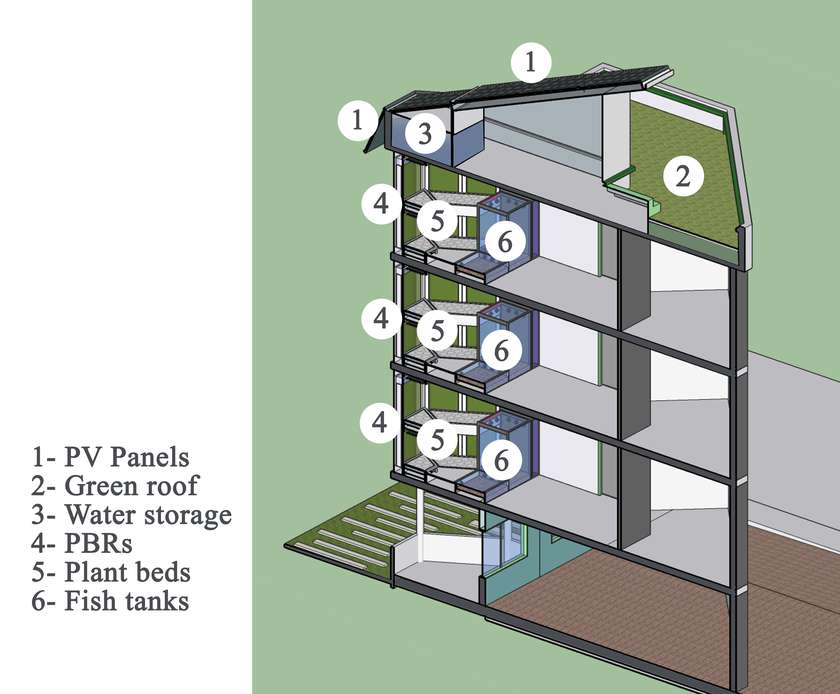
Economic
The whole system can have higher operational costs than current agricultural techniques. However, in terms of production capacity, this system will yield ten times more produce on a yearly basis since it can operate efficiently without many restrictions, such as day and night. Local farming chains, where everyone can contribute and barter with their own surplus produce will be another output of this project. Products can differ from one apartment to another.